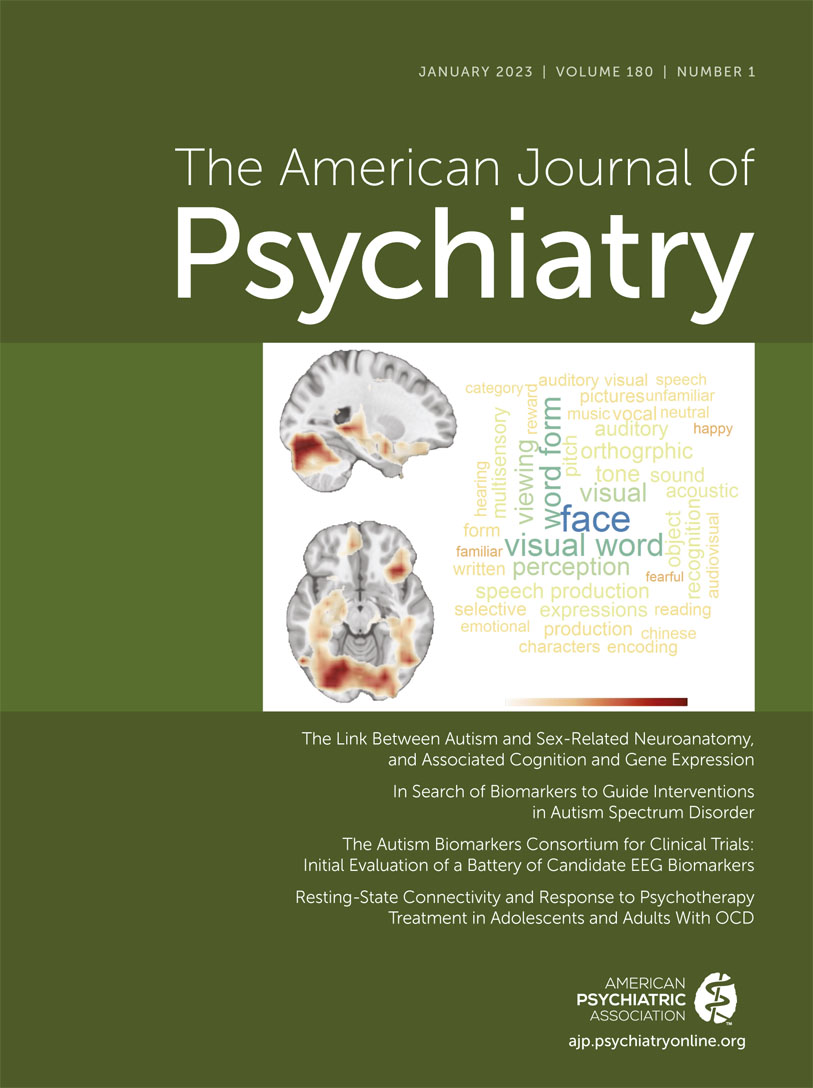Resting-State Connectivity and Response to Psychotherapy Treatment in Adolescents and Adults With OCD: A Randomized Clinical Trial
Abstract
Objective:
Cortical-subcortical hyperconnectivity related to affective-behavioral integration and cortical network hypoconnectivity related to cognitive control have been demonstrated in obsessive-compulsive disorder (OCD); the study objective was to examine whether these connectivity patterns predict treatment response.
Methods:
Adolescents (ages 12–17) and adults (ages 24–45) were randomly assigned to 12 sessions of exposure and response prevention (ERP) or stress management therapy (SMT), an active control. Before treatment, resting-state connectivity of ventromedial prefrontal cortical (vmPFC), cingulo-opercular, frontoparietal, and subcortical regions was assessed with functional MRI. OCD severity was assessed with the Yale-Brown Obsessive Compulsive Scale before, during, and after treatment. Usable fMRI and longitudinal symptom data were obtained from 116 patients (68 female; 54 adolescents; 60 medicated).
Results:
ERP produced greater decreases in symptom scores than SMT. ERP was selectively associated with less vmPFC-subcortical (caudate and thalamus) connectivity in both age groups and primarily in unmedicated participants. Greater symptom improvement with both ERP and SMT was associated with greater cognitive-control (cingulo-opercular and frontoparietal) and subcortical (putamen) connectivity across age groups. Developmental specificity was observed across ERP and SMT treatments, such that greater improvements with ERP than SMT were associated with greater frontoparietal-subcortical (nucleus accumbens) connectivity in adolescents but greater connectivity between frontoparietal regions in adults. Comparison of response-predictive connections revealed no significant differences compared with a matched healthy control group.
Conclusions:
The results suggest that less vmPFC-subcortical connectivity related to affect-influenced behavior may be important for ERP engagement, whereas greater cognitive-control and motor circuit connectivity may generally facilitate response to psychotherapy. Finally, neural predictors of treatment response may differ by age.



